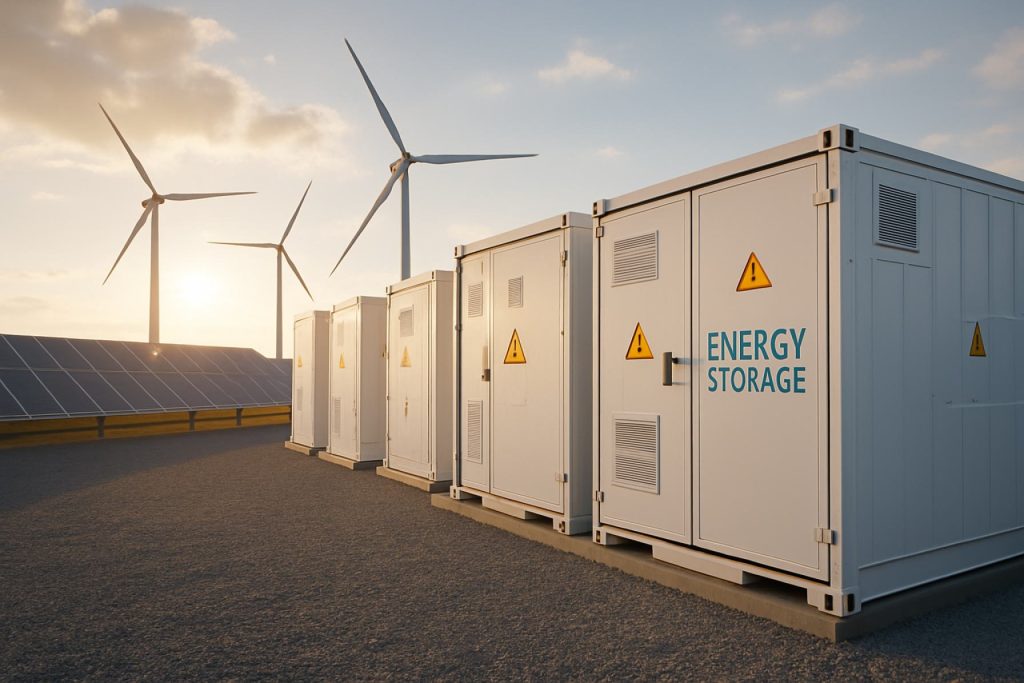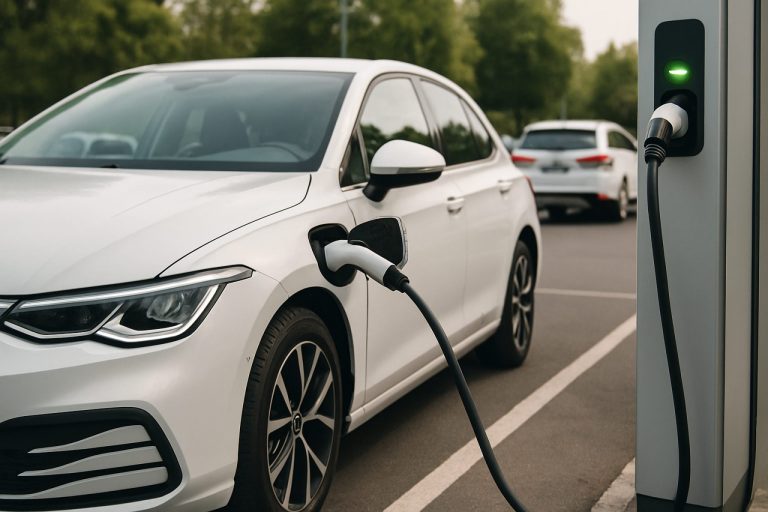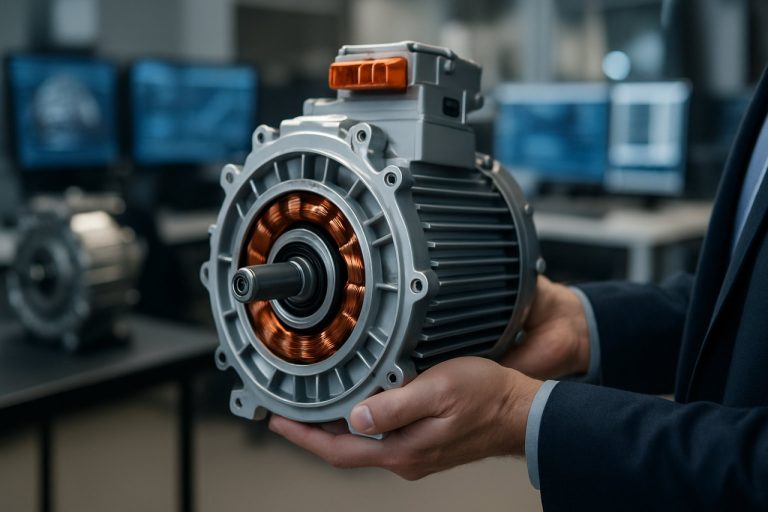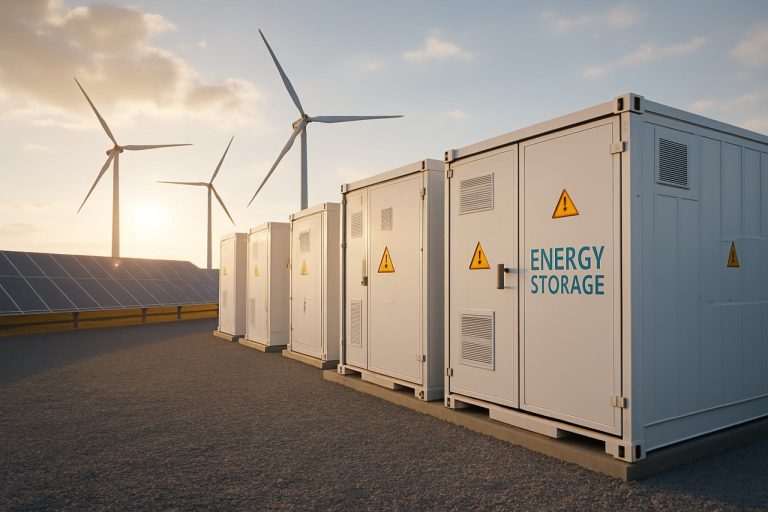
Grid Storage Integration in 2025: How Advanced Storage Solutions Are Reshaping Power Grids for a Resilient, Renewable Future. Explore Market Growth, Technology Shifts, and Strategic Opportunities.
- Executive Summary: Grid Storage Integration Market Outlook 2025–2030
- Market Size, Growth Rate, and Forecasts (2025–2030)
- Key Drivers: Renewables, Electrification, and Policy Mandates
- Technology Landscape: Battery, Thermal, Mechanical, and Hybrid Solutions
- Integration Challenges: Interoperability, Cybersecurity, and Grid Stability
- Leading Players and Strategic Partnerships (e.g., tesla.com, siemens-energy.com, ge.com)
- Regional Analysis: North America, Europe, Asia-Pacific, and Emerging Markets
- Revenue Models and Investment Trends in Grid Storage
- Regulatory Environment and Industry Standards (e.g., ieee.org, nrel.gov)
- Future Outlook: Innovations, Scalability, and Market Disruption Scenarios
- Sources & References
Executive Summary: Grid Storage Integration Market Outlook 2025–2030
Grid storage integration is rapidly emerging as a cornerstone of the global energy transition, driven by the accelerating deployment of renewable energy sources and the urgent need for grid flexibility. As of 2025, the market is witnessing a surge in large-scale battery energy storage system (BESS) installations, with lithium-ion technology dominating new deployments due to its cost-effectiveness, scalability, and proven performance. Major industry players such as Tesla, Inc., LG Energy Solution, and Samsung SDI are expanding their manufacturing capacities and project portfolios to meet growing demand for grid-connected storage solutions.
The integration of storage into transmission and distribution networks is being prioritized by utilities and grid operators to address the intermittency of solar and wind power. In the United States, grid-scale storage capacity surpassed 10 GW in 2024, with projections indicating a doubling by 2027 as utilities accelerate procurement and deployment of BESS projects. Siemens AG and Hitachi Energy are actively collaborating with utilities to deliver turnkey storage integration solutions, including advanced energy management systems and grid control software.
Europe is also experiencing robust growth, with countries such as Germany, the UK, and Spain implementing regulatory frameworks that incentivize storage integration to support renewable targets and grid stability. Enel S.p.A. and Électricité de France (EDF) are leading the deployment of hybrid renewable-plus-storage projects, leveraging their expertise in both generation and grid operations. Meanwhile, China continues to dominate global storage additions, with state-owned enterprises like China Three Gorges Corporation and State Grid Corporation of China investing heavily in both battery and pumped hydro storage integration.
Looking ahead to 2030, the outlook for grid storage integration remains highly positive. The International Energy Agency forecasts that global grid-connected storage capacity could exceed 500 GW by the end of the decade, underpinned by falling battery costs, supportive policy measures, and the electrification of transport and industry. Key challenges remain, including the need for standardized interconnection protocols, enhanced grid digitalization, and streamlined permitting processes. However, ongoing innovation and collaboration among technology providers, utilities, and regulators are expected to drive continued market expansion and ensure that grid storage integration plays a pivotal role in enabling a resilient, low-carbon power system.
Market Size, Growth Rate, and Forecasts (2025–2030)
Grid storage integration is rapidly emerging as a cornerstone of the global energy transition, driven by the accelerating deployment of renewable energy sources and the need for grid flexibility. As of 2025, the market for grid-connected energy storage—encompassing technologies such as lithium-ion batteries, flow batteries, and advanced mechanical storage—is experiencing robust growth, with significant investments from utilities, independent power producers, and governments worldwide.
The installed capacity of grid-scale battery storage has seen exponential increases in recent years. For example, Tesla, Inc.—a leading manufacturer of lithium-ion battery systems—reported that its deployed energy storage capacity surpassed 15 GWh globally by late 2024, with its Megapack systems being integrated into utility-scale projects across North America, Europe, and Asia. Similarly, LG Energy Solution and Samsung SDI have expanded their grid storage portfolios, supplying battery systems to major grid operators and renewable developers.
In the United States, grid storage integration is being accelerated by policy incentives and state mandates. The California Independent System Operator (CAISO) reported that as of early 2025, over 6 GW of battery storage was operational on its grid, with projections to double by 2030 as part of the state’s clean energy targets (California ISO). In Europe, Enel and EDF are leading the integration of large-scale storage with renewable assets, supporting grid stability and frequency regulation.
China remains the largest single market for grid storage integration, with state-owned enterprises such as China Tianying Inc. and State Grid Corporation of China deploying multi-gigawatt battery and pumped hydro projects to support the country’s ambitious renewable energy buildout. According to State Grid Corporation of China, over 10 GW of new grid-connected storage is expected to be commissioned annually through 2030.
Looking ahead, the global grid storage integration market is forecast to maintain a compound annual growth rate (CAGR) exceeding 20% through 2030, driven by falling battery costs, regulatory support, and the imperative to balance variable renewable generation. Key players—including Tesla, Inc., LG Energy Solution, Siemens AG, and Hitachi, Ltd.—are investing in advanced storage technologies and digital grid management solutions to enable seamless integration at scale. The outlook for 2025–2030 is characterized by rapid capacity additions, technological innovation, and increasing participation from both public and private sectors.
Key Drivers: Renewables, Electrification, and Policy Mandates
Grid storage integration is rapidly becoming a cornerstone of modern electricity systems, driven by the accelerating deployment of renewable energy, widespread electrification, and increasingly ambitious policy mandates. As of 2025, the global grid is undergoing a transformation, with storage technologies—primarily lithium-ion batteries, but also including flow batteries and emerging long-duration solutions—playing a pivotal role in balancing supply and demand, enhancing grid reliability, and enabling higher shares of variable renewables.
The surge in renewable energy, particularly solar and wind, has created new challenges for grid operators due to their intermittent nature. In response, grid-scale storage installations are expanding at an unprecedented pace. For example, Tesla, Inc. has deployed its Megapack battery systems in multiple continents, supporting utilities in the United States, Australia, and Europe to stabilize grids and provide ancillary services. Similarly, LG Energy Solution and Samsung SDI are scaling up their battery manufacturing and grid storage offerings, targeting both utility and commercial applications.
Electrification trends—such as the growth of electric vehicles (EVs), heat pumps, and industrial electrification—are increasing overall electricity demand and shifting load profiles. This is intensifying the need for flexible resources that can absorb excess generation and discharge during peak periods. Companies like Enel and EDF are integrating large-scale storage with renewable assets, while also piloting vehicle-to-grid (V2G) and distributed storage solutions to further enhance grid flexibility.
Policy mandates are a critical driver in 2025 and beyond. The European Union’s “Fit for 55” package and the United States’ Inflation Reduction Act are incentivizing storage deployment through direct subsidies, tax credits, and capacity market reforms. In China, the National Energy Administration has set targets for new energy storage installations to reach at least 30 GW by 2025, with major state-owned utilities such as State Power Investment Corporation and China Electricity Council leading large-scale projects.
Looking ahead, the outlook for grid storage integration is robust. Industry forecasts anticipate global grid-connected storage capacity to more than double by 2030, with significant investments from both established energy companies and new entrants. The continued evolution of regulatory frameworks, coupled with declining battery costs and technological innovation, is expected to further accelerate the integration of storage into power grids worldwide, supporting the transition to a low-carbon, resilient energy system.
Technology Landscape: Battery, Thermal, Mechanical, and Hybrid Solutions
Grid storage integration is rapidly evolving as utilities and grid operators seek to accommodate higher shares of variable renewable energy, enhance grid reliability, and support decarbonization goals. In 2025 and the coming years, the integration of battery, thermal, mechanical, and hybrid storage solutions into grid infrastructure is expected to accelerate, driven by both policy mandates and technological advancements.
Battery energy storage systems (BESS), particularly those based on lithium-ion technology, remain at the forefront of grid integration efforts. Major manufacturers such as Tesla, Inc. and LG Energy Solution are scaling up production of grid-scale systems, with deployments increasingly exceeding 100 MW per project. For example, Tesla’s Megapack installations are now a common feature in utility-scale projects across North America, Europe, and Australia, providing services such as frequency regulation, peak shaving, and renewable integration. The modularity and rapid deployment capabilities of BESS make them attractive for both new and retrofit grid applications.
Thermal energy storage (TES) is also gaining traction, particularly in regions with high solar penetration. Companies like Absolicon and Azelio AB are advancing TES solutions that store excess renewable energy as heat, which can later be converted to electricity or used directly for industrial processes. These systems are being integrated into district heating networks and industrial sites, offering multi-hour to multi-day storage durations that complement shorter-duration batteries.
Mechanical storage technologies, such as pumped hydro and advanced compressed air energy storage (CAES), continue to play a foundational role in grid integration. Voith Group and Andeavor (for pumped hydro) are expanding their portfolios, while companies like Hydrostor Inc. are commercializing new CAES projects. These systems offer large-scale, long-duration storage, critical for seasonal balancing and grid stability.
Hybrid storage solutions, which combine multiple storage technologies (e.g., batteries with thermal or mechanical systems), are emerging as a promising approach to optimize performance and economics. Integrators such as Siemens Energy are piloting hybrid systems that leverage the fast response of batteries with the long-duration capabilities of thermal or mechanical storage, enabling more flexible and resilient grid operations.
Looking ahead, grid storage integration is expected to be shaped by ongoing cost declines, regulatory support, and the need for greater grid flexibility. The International Energy Agency projects that global grid-connected storage capacity could triple by 2030, with batteries leading but significant roles for thermal and mechanical solutions. As grid operators increasingly value multi-service storage assets, the integration of diverse storage technologies will be central to the energy transition.
Integration Challenges: Interoperability, Cybersecurity, and Grid Stability
Grid storage integration is rapidly becoming a cornerstone of modern power systems, but its deployment at scale introduces significant challenges related to interoperability, cybersecurity, and grid stability. As of 2025, utilities and grid operators are accelerating the adoption of large-scale battery energy storage systems (BESS), pumped hydro, and emerging technologies to support renewable energy integration and grid flexibility. However, the complexity of integrating diverse storage assets into existing grid infrastructure is exposing new technical and operational hurdles.
Interoperability remains a primary concern. Storage systems from different manufacturers often use proprietary communication protocols and control systems, complicating seamless integration with grid management platforms. Industry leaders such as Siemens and Hitachi Energy are actively developing standardized interfaces and digital platforms to enable interoperability between storage assets, distributed energy resources, and grid control centers. The adoption of open standards like IEC 61850 is gaining momentum, but widespread implementation is still in progress, with full interoperability expected to remain a challenge through the late 2020s.
Cybersecurity is another critical issue as grid storage systems become increasingly digitalized and connected. The proliferation of remote monitoring, cloud-based analytics, and automated control heightens the risk of cyberattacks targeting storage assets and grid operations. Organizations such as ABB and Schneider Electric are investing in advanced cybersecurity solutions, including real-time threat detection and secure communication protocols, to protect storage infrastructure. Regulatory bodies are also tightening requirements for cybersecurity compliance, with new standards and guidelines being rolled out in North America, Europe, and Asia-Pacific.
Grid stability is a further area of concern, particularly as storage systems are tasked with providing fast frequency response, voltage support, and black start capabilities. The variability of renewable generation and the rapid response characteristics of battery storage can introduce new dynamics into grid operation, requiring advanced control algorithms and real-time coordination. Companies like Tesla and LG Energy Solution are deploying grid-scale storage projects that demonstrate the potential for storage to enhance stability, but grid operators are still refining operational practices and market mechanisms to fully leverage these capabilities.
Looking ahead, the next few years will see continued investment in interoperability frameworks, cybersecurity hardening, and advanced grid management tools. Collaboration between technology providers, utilities, and standards organizations will be essential to address these integration challenges and unlock the full value of grid storage in supporting a resilient, decarbonized power system.
Leading Players and Strategic Partnerships (e.g., tesla.com, siemens-energy.com, ge.com)
Grid storage integration is rapidly evolving as a cornerstone of the global energy transition, with leading technology providers and utilities forging strategic partnerships to accelerate deployment. As of 2025, the sector is characterized by a surge in large-scale battery energy storage system (BESS) installations, grid modernization projects, and collaborative ventures aimed at enhancing grid flexibility and reliability.
Among the most prominent players, Tesla, Inc. continues to expand its global footprint with its Megapack and Powerpack solutions. Tesla’s grid-scale storage projects, such as those in California and Australia, have demonstrated the viability of lithium-ion BESS for frequency regulation, peak shaving, and renewable integration. The company’s partnerships with utilities and independent power producers are expected to intensify, with new installations planned in North America, Europe, and Asia through 2025.
Siemens Energy AG is another key player, leveraging its expertise in grid automation and digitalization. Siemens Energy’s grid storage portfolio includes advanced battery systems, hydrogen-based storage, and hybrid solutions. The company is actively collaborating with transmission system operators and regional utilities to pilot and scale up grid storage projects, particularly in Germany and the broader European Union, where grid stability and renewable integration are policy priorities.
General Electric Company (GE) is also at the forefront, offering modular BESS platforms and grid integration services. GE’s Reservoir storage system is being deployed in several utility-scale projects, supporting grid balancing and black start capabilities. The company’s strategic alliances with renewable developers and grid operators are expected to drive further adoption, especially in markets with aggressive decarbonization targets.
Other notable contributors include ABB Ltd., which provides integrated energy storage and microgrid solutions, and Hitachi Energy, known for its Grid Edge Solutions and e-mesh platforms. Both companies are engaged in partnerships with utilities and industrial customers to deploy storage assets that enhance grid resilience and enable higher shares of renewables.
Looking ahead, the outlook for grid storage integration is robust. Industry leaders are expected to deepen collaborations with utilities, grid operators, and renewable developers, leveraging digital platforms and advanced analytics to optimize storage deployment. As regulatory frameworks evolve and storage costs decline, strategic partnerships will remain pivotal in scaling up grid storage and supporting the transition to a more flexible, decarbonized power system.
Regional Analysis: North America, Europe, Asia-Pacific, and Emerging Markets
Grid storage integration is rapidly advancing across North America, Europe, Asia-Pacific, and emerging markets, driven by the urgent need to balance renewable energy variability and enhance grid reliability. As of 2025, each region demonstrates distinct strategies and progress, shaped by policy frameworks, market structures, and technology adoption.
North America continues to lead in large-scale grid storage deployments, particularly in the United States. The U.S. has surpassed 10 GW of installed battery storage capacity, with significant projects in California and Texas supporting renewable integration and grid resilience. The Inflation Reduction Act and state-level incentives are accelerating investment in both utility-scale and distributed storage. Major players such as Tesla (with its Megapack systems), NextEra Energy, and Vistra are expanding their portfolios, while grid operators like California ISO are actively incorporating storage into market operations. Canada is also scaling up storage, with provinces like Ontario and Alberta piloting grid-scale battery and hybrid projects.
Europe is experiencing a surge in grid storage integration, propelled by the EU’s Fit for 55 package and national decarbonization targets. The region’s installed battery storage capacity is expected to exceed 9 GW by 2025, with Germany, the UK, and Italy leading deployments. The UK’s National Grid is leveraging storage for frequency response and balancing services, while Germany’s RWE and Enel in Italy are investing in hybrid renewable-plus-storage plants. The European Union’s focus on cross-border interconnections and grid flexibility is fostering a robust market for both lithium-ion and emerging long-duration storage technologies.
Asia-Pacific is witnessing rapid growth, particularly in China, which is projected to install over 12 GW of new grid-connected storage in 2025 alone. The Chinese government’s mandates for renewable integration and grid stability are driving large-scale battery and pumped hydro projects, with state-owned enterprises like State Grid Corporation of China and China Three Gorges Corporation at the forefront. Australia is also notable, with grid-scale battery projects such as the Victorian Big Battery and Hornsdale Power Reserve, supported by AusNet Services and Neoen.
Emerging markets in Latin America, Africa, and Southeast Asia are beginning to integrate grid storage, often in tandem with rural electrification and microgrid initiatives. In India, government-backed tenders are catalyzing battery storage adoption, with companies like Tata Power and Reliance Industries entering the sector. African nations are piloting storage to stabilize grids and support solar mini-grids, with support from multilateral agencies and local utilities.
Looking ahead, grid storage integration is set to accelerate globally through 2025 and beyond, underpinned by falling battery costs, supportive regulation, and the imperative to decarbonize power systems. Regional differences in technology mix and market design will persist, but the trajectory is clear: storage is becoming a cornerstone of modern, flexible electricity grids.
Revenue Models and Investment Trends in Grid Storage
Grid storage integration is rapidly evolving as a cornerstone of modern electricity systems, driven by the accelerating deployment of renewable energy and the need for grid flexibility. In 2025 and the coming years, the integration of large-scale battery energy storage systems (BESS), pumped hydro, and emerging technologies is reshaping revenue models and attracting significant investment.
A key trend is the proliferation of utility-scale battery projects, particularly lithium-ion systems, which are being integrated directly with transmission and distribution networks. Companies such as Tesla, Inc. and LG Energy Solution are leading suppliers, with their systems deployed in major grid-scale projects across North America, Europe, and Asia-Pacific. For example, Tesla’s Megapack installations are now supporting grid operations in California, the UK, and Australia, providing services such as frequency regulation, peak shaving, and energy arbitrage.
Revenue models for grid storage integration are diversifying. Traditionally, storage assets earned revenue through ancillary services—frequency response, spinning reserve, and voltage support. However, as market rules evolve, storage is increasingly participating in capacity markets and energy trading. In the US, the Federal Energy Regulatory Commission’s Order 841 has opened wholesale markets to storage, enabling new revenue streams for asset owners. In Europe, grid storage is being integrated into capacity mechanisms and balancing markets, with countries like Germany and the UK leading in regulatory adaptation.
Investment trends reflect this shift. Utilities and independent power producers are scaling up their storage portfolios, often co-locating batteries with solar and wind assets to maximize grid value. NextEra Energy, the world’s largest producer of wind and solar energy, is investing billions in grid-connected storage, aiming to deploy over 30 GW of storage capacity by 2030. Similarly, Enel is expanding its storage footprint in Europe and the Americas, integrating batteries with renewables to enhance grid reliability and unlock new revenue streams.
Looking ahead, grid storage integration will be shaped by advances in battery chemistries, digital controls, and market design. The emergence of long-duration storage technologies, such as flow batteries and advanced pumped hydro, is expected to further diversify integration strategies and revenue models. As grid operators and regulators adapt, the sector is poised for continued growth, with storage playing a central role in enabling a resilient, low-carbon electricity system.
Regulatory Environment and Industry Standards (e.g., ieee.org, nrel.gov)
Grid storage integration is rapidly evolving as a cornerstone of the global energy transition, with regulatory frameworks and industry standards playing a pivotal role in shaping deployment and interoperability. As of 2025, the regulatory environment is characterized by a concerted push towards harmonizing technical requirements, safety protocols, and market participation rules for energy storage systems (ESS) across major markets.
In the United States, the Federal Energy Regulatory Commission (FERC) continues to implement and refine Order No. 841, which mandates that regional transmission organizations (RTOs) and independent system operators (ISOs) enable energy storage resources to participate in wholesale energy, capacity, and ancillary services markets. This regulatory action has accelerated the integration of grid-scale storage, with over 10 GW of battery storage now operational nationwide, and projections indicating a doubling of capacity by 2027. The National Renewable Energy Laboratory (NREL) is actively supporting these efforts by developing modeling tools and best practices for grid operators to assess storage impacts on reliability and flexibility.
On the standards front, the Institute of Electrical and Electronics Engineers (IEEE) has updated key standards such as IEEE 1547, which governs the interconnection and interoperability of distributed energy resources (DERs), including storage, with the electric grid. The 2023 revision emphasizes advanced inverter functionalities, cybersecurity, and harmonization with international standards, setting the stage for widespread adoption in 2025 and beyond. These standards are critical for ensuring safe, reliable, and efficient integration of storage at both transmission and distribution levels.
In Europe, the European Union’s Clean Energy Package and the Network Codes are driving member states to remove barriers for storage participation in energy markets and grid services. The European Committee for Electrotechnical Standardization (CENELEC) is working in parallel with IEEE to align technical standards, facilitating cross-border storage projects and grid balancing initiatives. Major European transmission system operators, such as TenneT and National Grid, are piloting large-scale storage integration, focusing on frequency regulation and congestion management.
Looking ahead, regulatory bodies are expected to further clarify the role of storage as both a generation and load asset, streamline permitting processes, and incentivize grid-supportive functionalities such as black start and synthetic inertia. Industry standards will increasingly address interoperability, data exchange, and lifecycle management, supporting the anticipated surge in hybrid renewable-plus-storage projects. The ongoing collaboration between regulators, standards organizations, and industry leaders will be crucial to unlocking the full potential of grid storage integration in the coming years.
Future Outlook: Innovations, Scalability, and Market Disruption Scenarios
Grid storage integration is poised for significant transformation in 2025 and the following years, driven by rapid advances in battery technologies, grid management software, and regulatory frameworks. As renewable energy penetration increases, the need for scalable, flexible, and reliable grid storage solutions becomes critical to ensure grid stability and enable deeper decarbonization.
A key trend is the deployment of large-scale battery energy storage systems (BESS) at both utility and distributed levels. Companies such as Tesla, Inc. and LG Energy Solution are expanding their grid-scale offerings, with Tesla’s Megapack installations surpassing several gigawatt-hours globally by 2024 and new projects scheduled for commissioning in 2025. These systems are increasingly integrated with advanced energy management platforms, enabling real-time optimization of storage assets and grid services.
Another major player, Siemens AG, is focusing on digital grid solutions that combine storage with intelligent control systems, facilitating seamless integration of intermittent renewables. Siemens’ grid automation and storage integration projects are being piloted in Europe and North America, with scalability and interoperability as core design principles.
In parallel, Contemporary Amperex Technology Co., Limited (CATL)—the world’s largest battery manufacturer—has announced new grid storage products with improved cycle life and safety, targeting multi-gigawatt-hour deployments in Asia, Europe, and the Americas. CATL’s focus on lithium iron phosphate (LFP) chemistries is expected to lower costs and enhance the economic viability of grid storage.
On the regulatory front, grid operators and transmission system operators are updating interconnection standards and market rules to accommodate fast-responding storage assets. For example, National Grid in the UK and PJM Interconnection in the US are piloting new ancillary service markets and dynamic response programs, which are expected to accelerate storage adoption and integration.
Looking ahead, innovations such as flow batteries, hybrid storage systems, and vehicle-to-grid (V2G) integration are likely to disrupt traditional grid storage paradigms. Companies like Volkswagen AG are exploring V2G pilots, leveraging electric vehicle fleets as distributed storage resources. The convergence of these technologies, combined with supportive policy and market mechanisms, positions grid storage integration as a cornerstone of the future energy system, with scalability and flexibility at its core.
Sources & References
- Siemens AG
- Hitachi Energy
- Enel S.p.A.
- China Three Gorges Corporation
- Hitachi, Ltd.
- Voith Group
- Hydrostor Inc.
- Siemens Energy
- General Electric Company (GE)
- NextEra Energy
- Vistra
- AusNet Services
- Tata Power
- Reliance Industries
- National Renewable Energy Laboratory
- Institute of Electrical and Electronics Engineers
- TenneT
- National Grid
- Contemporary Amperex Technology Co., Limited (CATL)
- Volkswagen AG



